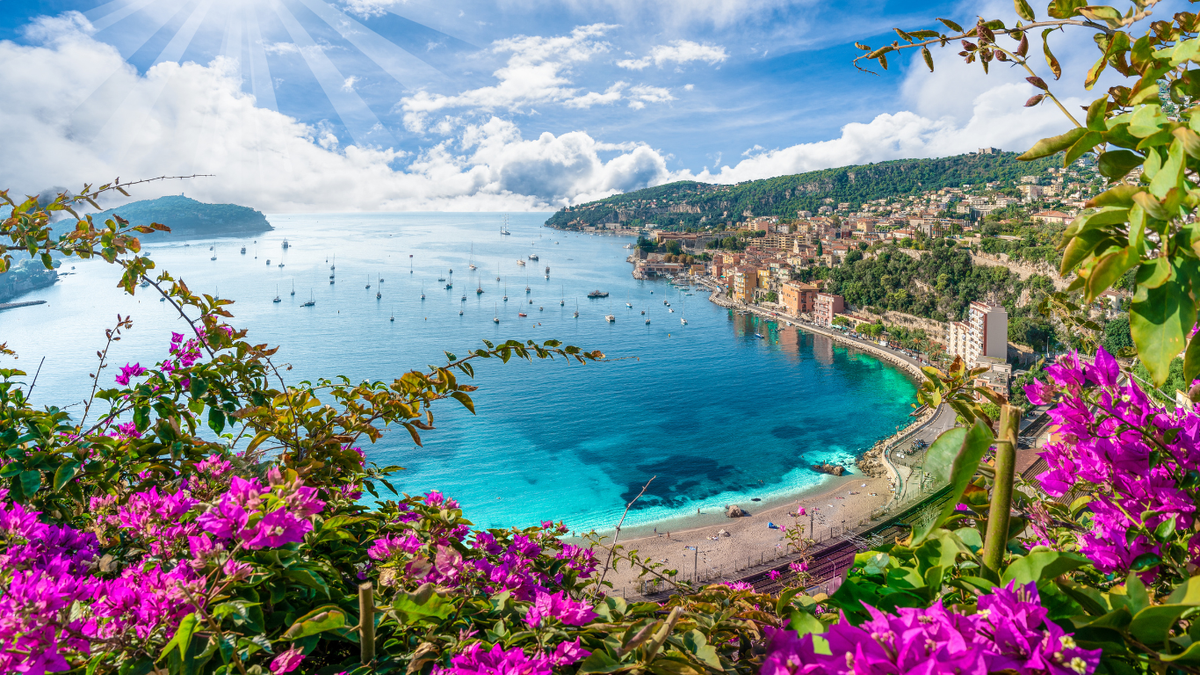The Uyuni Salt Flat: The World's Largest Salt Flat—A Bolivian Natural Wonder

Salar de Uyuni (Uyuni Salt Falt)
The Uyuni Salt Flat, also known as Salar de Uyuni or Salar de Tunupa, is the world’s largest salt flat, covering 10,582 square kilometers (4,086 square miles). Located in the Daniel Campos Province in Potosí, southwestern Bolivia, near the crest of the Andes at an elevation of 3,656 meters (11,995 feet) above sea level, this awe-inspiring natural wonder was formed from the transformation of prehistoric lakes that evaporated thousands of years ago.
The Uyuni Salt Flat is to Bolivia what Machu Picchu is to Peru—a top attraction that draws visitors from around the world. The endless, surreal landscape of white salt stretches as far as the eye can see, a remnant of lakes that dried up more than 50,000 years ago. One of its most fascinating features is its extreme flatness, providing the perfect canvas for iconic perspective photography.
During the rainy season, starting in late November, a thin layer of water covers the salt flat, transforming it into the world’s largest natural mirror. This stunning reflective surface makes Salar de Uyuni one of the most popular destinations for photographers, offering countless opportunities to capture surreal, dreamlike scenes—truly unforgettable Kodak moments.


Salar de Uyuni Formation and Geology
The Uyuni Salt Flat was formed from several prehistoric lakes, the oldest being Lake Minchin, which existed between 30,000 and 42,000 years ago. Over time, these lakes evaporated, leaving behind vast salt deposits. The final stage of this transformation resulted in the modern-day Salar de Uyuni, along with neighboring Salar de Coipasa and the smaller Lakes Poopó and Uru Uru. Today, the salt crust covering the flat is a few meters thick and extremely flat, with elevation variations of less than one meter over the entire area.
Beneath the salt crust is a pool of brine rich in lithium—an essential component for modern batteries. This flat surface, combined with its large area and clear skies, makes Salar de Uyuni an ideal location for satellite calibration, offering unparalleled reflectivity for space missions.
Climate In Salar de Uyuni
The Uyuni Salt Flat enjoys a relatively stable climate. Average daytime temperatures peak at 21°C (70°F) between November and January, and drop to around 13°C (55°F) in June. Nights are consistently cold, with temperatures ranging from -9°C (16°F) to 5°C (41°F) throughout the year. Rainfall is minimal except during the wet season, which spans from December to April, transforming the salt flat into the world's largest natural mirror, reflecting the sky in a stunning optical illusion. Rainfall can reach up to 80 mm (3.1 inches) in January, with the rest of the year being quite dry.
Economic Influence and Lithium Resources in Salar de Uyuni
The Uyuni Salt Flat sits at the heart of the Lithium Triangle, which contains some of the world’s largest reserves of lithium. Beneath the salt crust lies brine rich in lithium chloride, sodium chloride, potassium, and magnesium. Bolivia holds about 22% of the world’s known lithium resources, with the majority located in Salar de Uyuni. This has made the region a focus of global attention for its potential in lithium extraction.
- Salt and Lithium Extraction:
Salt production is a traditional activity in the area, with an estimated 10 billion tons of salt deposits. However, lithium extraction has become increasingly important due to the demand for batteries. Despite this, local communities have resisted foreign exploitation of these resources, leading to plans for Bolivian-controlled extraction efforts.
Salar de Uyuni Is A Top Tourist Attraction In Bolivia and Here's Why You Should Visit!
The Uyuni Salt Flat is one of Bolivia's most popular tourist destinations, with travelers flocking to witness the vast, otherworldly expanse of white salt or the breathtaking reflections during the wet season. Uyuni is the gateway to this remarkable site, offering a variety of tours, ranging from single-day trips to multi-day excursions that explore the salt flat, the Incahuasi Island, and the surrounding desert landscapes, such as Laguna Colorada.
You can also explore the Uyuni Salt Flat on your own, although is a little more tricky than one would like, as they try to monopolize your ability to visit without the help of a guide. However, thanks to this post by The Ungraceful Guide—you have detailed instructions on how to visit the salar (salt) on your own terms.
- Best Time to Visit Uyuni Salt Flat:
The ideal time to visit Salar de Uyuni is during the rainy season (December to April) for the stunning mirror effect. However, the dry season (May to November) offers excellent conditions for walking or driving across the salt flats. - How to Get There:
Most visitors start their journey in the town of Uyuni, which is accessible by flights from La Paz or by bus. From there, tours are available that take you into the heart of the salt flat, but we highly recommend you see the link shared above from The Ungraceful Guide.
Uyuni Salt Flat Wildlife and Plant Species
While the Uyuni Salt Flat itself is mostly devoid of vegetation, the surrounding areas host a variety of plant species, including giant cacti on Incahuasi Island, as well as quinoa plants and queñua bushes. The salt flat is also an important breeding ground for three species of flamingos—the Chilean, Andean, and the rare James's flamingo. Other wildlife includes vicuñas, Andean foxes (culpeo), and vizcachas.


During the rainy season, Salar de Uyuni transforms into the world's largest natural mirror. The thin layer of water covering the salt creates a perfect reflection of the sky, producing an illusion of endless, floating clouds and stunning sunrises and sunsets. This visual spectacle has made the Uyuni Salt Flat one of the most photographed places in the world.
Hollywood Movies Filmed at Salar de Uyuni
The otherworldly landscape of the Uyuni Salt Flat has attracted filmmakers for years. It was famously used as a filming location for Star Wars: The Last Jedi (2017), where it represented the planet Crait. Other films shot here include The Fall (2006), Salt and Fire (2016), and The Unseen (2017).

Stargazing at the Uyuni Salt Flat: A Celestial Experience Like No Other
Salar de Uyuni is not only famous for its vast, mirror-like landscapes during the rainy season, but also for offering one of the most incredible stargazing experiences on the planet. Located far from light pollution, the salt flat’s high altitude and crystal-clear skies create the perfect conditions for seeing the night sky in all its glory.

Why Salar de Uyuni Is a Stargazing Paradise
- Unmatched Altitude and Clarity: Situated at an elevation of 3,656 meters (11,995 feet), the Uyuni Salt Flat offers incredibly clear skies, free from the typical atmospheric distortion found at lower altitudes.
- No Light Pollution: The remoteness of Salar de Uyuni means there’s little to no light pollution, making it one of the best spots on Earth for gazing at the Milky Way, planets, and constellations.
- Mirror Effect at Night: During the rainy season (December to April), the shallow layer of water turns the salt flat into a massive natural mirror. At night, this creates a stunning effect where the stars are reflected on the surface, giving the illusion of walking through a sea of stars.
What to Expect While Stargazing at Salar de Uyuni
- Incredible Views of the Milky Way: The Milky Way shines brighter than ever here, stretching across the night sky in all its ethereal beauty. It’s one of the most photographed features at the salt flat during stargazing tours.
- Reflection of the Stars: When the salt flat is covered in water, the reflection of the stars creates a breathtaking, surreal experience. The stars seem to blend with their reflection on the ground, creating an infinite expanse of celestial light.
- Perfect for Astrophotography: Photographers from around the world flock to Salar de Uyuni for the chance to capture long-exposure shots of the Milky Way reflected on the salt flat’s surface. The combination of the stillness of the water and the bright, starry sky makes for some of the most iconic astrophotography in the world.
Tips for Stargazing at Uyuni Salt Flat
- Best Time for Stargazing: While stargazing is great year-round, the rainy season (December to April) offers the chance to witness the stunning mirror effect. However, for clearer skies without the risk of rain, visiting during the dry season (May to November) is ideal.
- Join a Night Tour: Many tour operators in Uyuni offer dedicated night tours that take you out onto the salt flat to experience the night sky. These tours often include transportation, expert guides, and plenty of opportunities for astrophotography.
- Dress Warm: Nights on the salt flat can be extremely cold, with temperatures dropping significantly after sunset. Make sure to dress in layers and bring warm clothing, as temperatures can drop to -9°C (16°F) during the night.
- Bring a Good Camera: If you’re into photography, pack a camera that allows for long exposures to capture the stunning reflections and starry skies. A tripod is also a must for steady shots.
The Magic of Salar de Uyuni at Night
Stargazing at the Uyuni Salt Flat is an otherworldly experience, where the ground and sky merge into a breathtaking spectacle of light and reflection. Whether you're a casual observer or a seasoned astrophotographer, this is an adventure you won't want to miss. The endless horizon, the crystal-clear night sky, and the unforgettable reflection of stars on the salt flat’s surface make this one of the most magical experiences in the world.
Frequently Asked Questions
What are the Salt Flats in Bolivia?
When is the best time to visit the Salt Flats?
How do you get to the Salt Flats in Bolivia?
Is there an entry fee to visit the Salt Flats if I go on my own?
What is the average cost of a tour to the Salt Flats?
Related Posts:
- Angel Falls: The World’s Tallest Waterfall
- Lake Titicaca Travel Guide: The Highest Navigable Lake
- 19 Mind-Blowing Natural Wonders in South America
- Marble Caves of Patagonia: A Must See Natural Wonder
- Kaieteur Falls: The World's Largest Single Drop Waterfall
Popular Beach Post:




Other Popular Post:









